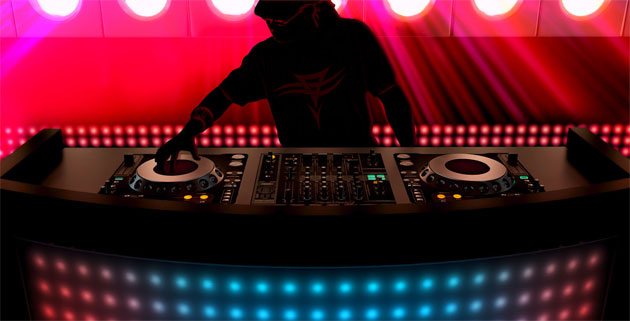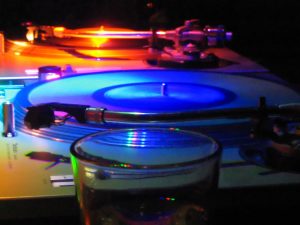Going further, Zimmerman explained, in his post, that popular software program Ableton aligns tracks, eliminating the essential beatmatching skill, and that producers like him are more at home than in the studio. So, does this mean that when you go to Ultra Music Festival, Electric Daisy Carnival, or even to your local club to hear some house that the person behind the decks is miming? Is every DJing gig simply like Top of the Pops, only with a laptop or Pioneer CDJ and mixing desk or controller? On Top of the Pops, at least, you could tell when a guitar or keyboard was not plugged in and notice that a performance had suspiciously studio-sounding quality. So, short of looking to see if Deadmau5’s or another’s DJing equipment is plugged in, how can you tell – purely as a fan, and not producer, of EDM – when someone’s faking, and what are the basics that any DJ must know for live performance? A headlining DJ must have this basic foundation. Otherwise, they’re nothing more than a celebrity behind a mixing desk. However, what makes a DJ truly unique is his contribution and perspective to a track. Going back to the Top of the Pops reference, is the track identical to the studio mix, or was something added extra? Avicii, for instance, is known for defaulting on his own produced tracks for sets, but on his recent Le7els Tour mashed up outside vocals with his beats – Florence and the Machine’s version of “You Got The Love” synched on top of “Penguin,” for instance – and altered pitch, intensity, and pacing of other tracks. But, live, how do you know Avicii simply didn’t record these mixes in the studio and then just “hit a spacebar” during the performance? You don’t, unless you watch multiple consecutive performances, listening for the mixing during each. While Deadmau5 may claim all headlining DJs go through the motions, Peter Kirn, editor of CreateDigitalMusic.com, counteracted, saying: “There are people who sing or add vocals or instruments, live, over their sets, while still maintaining enough underneath that people can dance. There are people who can play entire techno dance sets, live coding or live patching entire compositions improvisationally. There are artists on instruments like the monome, cutting up patterns as they go. There are controllerists and scratch turntablists, finger-drumming percussionists who toss all the loops and play beats from one-shots, multi-instrumentalists and beatjazz maniacs. And the list goes on.” Kirn, likely, gives a fuller picture of an EDM performance. Yes, it may be synched up on a laptop or CDJ, but truly skilled producers go to greater lengths to showcase their creativity in a live setting, be it through mixing or adding outside elements. Back in June, Canadian producer Deadmau5 made a controversial statement on his blog that could affect how concertgoers view EDM in the future. The DJ born Joel Zimmerman wrote: “I just roll up with a laptop and a midi controller and ‘select’ tracks
Back in June, Canadian producer Deadmau5 made a controversial statement on his blog that could affect how concertgoers view EDM in the future. The DJ born Joel Zimmerman wrote: “I just roll up with a laptop and a midi controller and ‘select’ tracks  Hearing and knowing how two tracks – one segueing into the other or mashed up – fit together require basic musical knowledge: beatmatching and key-matching. Want to hear what bad DJing or producing sounds like? Find a mashup video on YouTube, back from the 2007 mashup craze, and listen to it. If an amateur is attempting to merge two tracks, the tempos and beats frequently do not align, and the two overlapping keys create discordant harmonies: modulating to a key too far away, poor chord changes, or dissonant intervals in a single beat. Atonal harmonies work when an orchestra is playing Shostakovich – they don’t go over well at a rave, unfortunately.
Hearing and knowing how two tracks – one segueing into the other or mashed up – fit together require basic musical knowledge: beatmatching and key-matching. Want to hear what bad DJing or producing sounds like? Find a mashup video on YouTube, back from the 2007 mashup craze, and listen to it. If an amateur is attempting to merge two tracks, the tempos and beats frequently do not align, and the two overlapping keys create discordant harmonies: modulating to a key too far away, poor chord changes, or dissonant intervals in a single beat. Atonal harmonies work when an orchestra is playing Shostakovich – they don’t go over well at a rave, unfortunately.
[and] hit a spacebar. […] People assume there’s a guy on a laptop up there producing new original tracks on the fly. None of the ‘top DJ’s in the world’ to my knowledge have. Myself included.”



